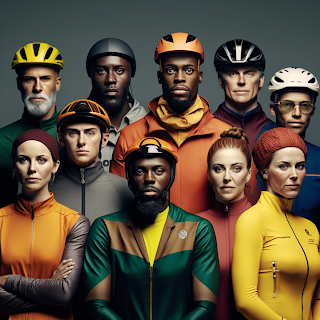Why Cycling Needs More Diversity—and What’s Being Done About It
Diversity in Cycling: Where We Stand Today
Cycling is a beautiful sport. It pushes body and mind, blending endurance, skill, and pure joy. Road, gravel, mountain, track, touring—it has something for almost everyone. But there’s still one issue holding the sport back: a serious lack of diversity and inclusion.
How We Got Here
The roots of this problem run deep. Historically, cycling was dominated by European countries, where the sport first took shape. That dominance still shows today—just look at the rosters of elite races like the Tour de France, which remain overwhelmingly white and European.
Beyond geography, cost is a huge barrier. High-quality bikes, helmets, shoes, and gear can add up to thousands of dollars. For riders from underserved communities, the price of entry makes organized cycling feel out of reach. Even after the pandemic cycling boom, many casual riders didn’t transition into clubs, racing, or touring—partly because they never felt truly welcomed.
The Numbers Still Tell the Story
Surveys continue to show that the majority of U.S. cyclists are white men. Women, people of color, and low-income riders remain underrepresented at nearly every level—from local clubs and races to the pro ranks. The lack of diversity doesn’t just reinforce stereotypes; it narrows the future of the sport.
- It limits access to new talent and perspectives.
- It keeps cycling culture from reflecting the communities it rides through.
- It risks cycling’s long-term growth in an era when fresh riders are needed most.
Signs of Progress
It’s not all bleak. Over the last few years, grassroots organizations have made real strides:
- Major Taylor Cycling Clubs keep growing across the U.S., honoring the legacy of the first African American world champion cyclist.
- Black Girls Do Bike has expanded chapters nationwide, creating safe and empowering spaces for women of color to ride.
- Indigenous and Latino cycling collectives have gained visibility, using group rides to build culture and community on two wheels.
- USA Cycling continues DEI initiatives, though critics note progress at the elite level is slow.
Even the Tour de France has opened the door to African teams, offering riders exposure on cycling’s biggest stage—though long-term support is still needed to make participation sustainable.
The Road Ahead
Cycling won’t thrive without greater inclusion. The sport’s survival depends on welcoming riders across race, gender, income, and background. That means reducing cost barriers, amplifying diverse voices, and supporting grassroots leaders who are already reshaping the culture.
More riders. More stories. More perspectives. That’s how cycling grows stronger—and how it keeps moving forward.
Last Updated: September 2025 — refreshed with new insights, updated organizations, and current context.



Comments
Post a Comment